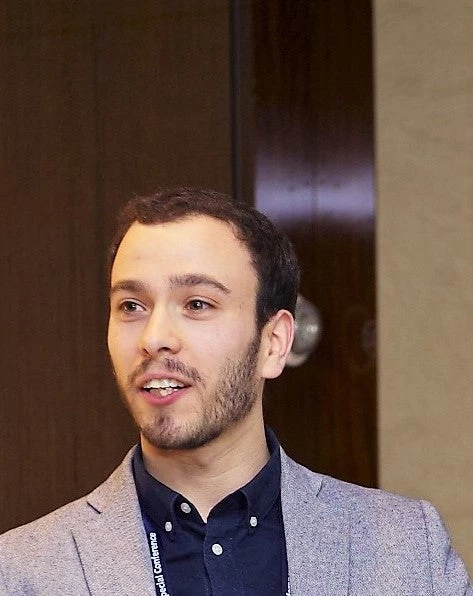Poverty is a complex concept. A widespread view argues that important aspects of poverty cannot be measured in monetary terms – in fact, to successfully address poverty, we need to measure it in all its facets. The recent release of the 2018 edition of the Poverty and Shared Prosperity Report contains the World Bank’s first attempt at measuring multidimensional poverty at a global level. Global measures of multidimensional poverty have a rich history, a prominent example being the annual Global MPI produced by the United Nations Development Programme with the Oxford Poverty & Human Development Initiative.
The World Bank’s measure of multidimensional poverty takes inspiration and guidance from such other measures but differs from many of them in one important aspect: Monetary poverty (measured as having a daily consumption less than $1.90 in 2011 PPP) is included as one of the dimensions of poverty. Although monetary poverty surely does not capture all forms of deprivation, it does capture a household’s ability to meet critical basic needs in food, shelter, clothing and other goods that are commonly obtained through market purchase (or self-provision).
The other dimensions included in this global exercise, which uses standardized recent survey data from 119 countries, consist of deprivations in education and in basic infrastructure (water, sanitation and electricity). These are important goods where, typically, adequate provision depends heavily on public spending. Because of this, monetary measures of poverty often don’t capture the full benefit to households associated with access to these services. At the global level, the report finds that the share of people that are multidimensional deprived is 50 percent higher than those that are only deprived in consumption or income.
More interestingly, including consumption as one of the dimensions allows for an analysis of the interplay between monetary and non-monetary poverty. Unsurprisingly, monetary poverty is correlated with deprivations in other domains, but this correlation is far from perfect. Figures 1 and 2 show that, while many of the monetary non-poor are deprived in either (or both) education and infrastructure, a fraction of the monetary poor are not deprived in education or infrastructure.
Even more importantly, the correlation of monetary and non-monetary poverty differs markedly by region and dimension. If monetary poverty was equally predictive of all non-monetary deprivations in all places, there would be little need to measure anything beyond monetary poverty: One could precisely predict the extent of non-monetary deprivations by measuring deprivation in daily income or consumption.
Instead, Figures 1 and 2 suggests that the monetary poor from wealthier regions have lower deprivation rates in education and basic infrastructure. For example, someone in Latin America and the Caribbean who lives on just $1.90 a day has about a 50 percent chance of living in a household without basic infrastructure, while in Sub-Saharan Africa this probability is closer to 90 percent. On the other hand, the monetary non-poor – those individuals living above $1.90 a day – are much more likely to be deprived in other dimensions if they live in Sub-Saharan Africa.
The countries in South Asia constitute an interesting case that exemplifies what we can learn from this broader approach to poverty measurement. Despite having one-third the monetary poverty rate of Sub-Saharan Africa, South Asia suffers from similar levels of non-monetary deprivations as Sub-Saharan Africa for a given level of income. Although South Asia has reduced monetary poverty at an impressive pace over the past decade, the region lags in the non-monetary dimensions of poverty. Yet, non-monetary deprivation in South Asia decreases fast as consumption increases. This could indicate polarized societies, where, for example, the rural population suffers from multiple deprivations while the urban does not.
While it is an important step to account for deprivations in education and basic infrastructure, these two dimensions surely do not cover all aspects of poverty. Chapter 4 of the 2018 Poverty and Shared Prosperity Report explores a more comprehensive measure of multidimensional poverty for six countries, adding deprivations in health, nutrition, and security to the three dimensions above. As with education and infrastructure, public spending often plays a key role in the provision of these services and hence their household benefits are not fully captured by the monetary poverty measures.
It turns out that these dimensions have an even more complex relationship with monetary poverty. The security dimension – which measures whether households live in a dangerous neighborhood or have been subject to crime or environmental catastrophe in the last year – is sometimes negatively correlated with monetary poverty (Figure 3 below). In Ecuador, for example, households that live in dangerous neighborhoods or have been subject to crime tend to live above the international poverty line.This has important implications for addressing poverty in the coming years. If the monetary poor are not the ones suffering from deprivations in other dimensions of poverty, what is the right target group for anti-poverty policies? One way to answer this question is to combine the different deprivations into one measure, which is precisely what the multidimensional poverty measure does. Doing so reveals that the profile of the poor changes substantially when more deprivations are accounted for. In Ecuador, where lack of security mostly is an issue in cities, poverty becomes more urbanized.
Monetary poverty and non-monetary poverty can capture different phenomena and different people. To successfully #CountPovertyOut we need to measure the different components of poverty and understand how these components interact with one another.





Join the Conversation